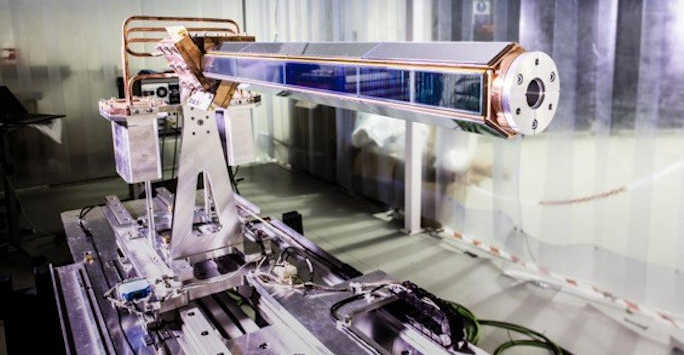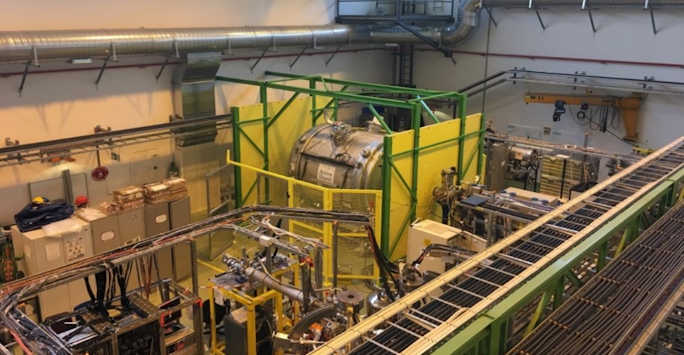ISOLDE Solenoidal Spectrometer

L. Gaffney, P. Butler, R.D. Page
The ISOLDE Solenoidal Spectrometer is a newly constructed instrument for precision studies of inelastic scattering and transfer reactions induced by radioactive ion beams provided by the HIE-ISOLDE accelerator at CERN. It will provide unrivalled opportunities for measuring key reactions and properties of nuclei relevant for nuclear astrophysical processes and measuring single-particle, collective and ground-state nuclear properties essential to the understanding of the interactions between nucleons in exotic nuclei, at both the precision and intensity frontiers.
The primary detector of the ISOLDE Solenoidal Spectrometer comprises a hexagonal tube of position sensitive silicon sensors placed along the axis of a 4T superconducting solenoid magnet. The Liverpool group led the development and construction of this advanced, innovative spectrometer system employing high-granularity silicon detectors for the measurement of charged-particle reaction products in collaboration with STFC Daresbury Laboratory, the University of Manchester, Leuven University (Belgium) and Argonne National Laboratory (USA). The detector is now installed at CERN inside its ex-MRI solenoid magnet that was previously used for medical imaging research at the University of Queensland's Centre for Advanced Imaging in Brisbane, Australia.

In the ISOLDE Solenoidal Spectrometer a thin plastic target foil containing deuterium nuclei is placed near the centre of the magnet and bombarded by beams of accelerated radioactive nuclei provided by HIE-ISOLDE. The ions emitted in these nuclear reactions are bent by the magnetic field so they follow spiral paths until they reach the silicon detectors, which measure their energies and position along the beam axis. This enables the energy levels of the exotic nucleus of interest to be measured with very high accuracy. Results published from an early implementation experiment explored neutron shell structure below lead and beyond N = 126, marking a first step in improving our understanding of the relevant structural properties of nuclei involved in a key part of the path of the astrophysical r process [1].
[1] T.L Tang, L.P. Gaffney, P.A. Butler, R.D. Page, et al., Physical Review Letters 124 (2020) 062502. doi: 10.1103/PhysRevLett.124.062502
Contacts
Prof. Robert Page rdp@ns.ph.liv.ac.uk
Dr Liam Gaffney liam.gaffney@liverpool.ac.uk